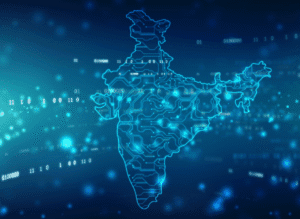Direct-to-Mobile Technology: 7 Ways This Game-Changing Innovation Will Revolutionize India’s Digital Future
Ahead of the 2025 World Audio Visual and Entertainment Summit, Indian tech leaders Free Stream Technologies, Lava International, and HMD Global announced plans to launch Direct-to-Mobile (D2M) devices, leveraging unused TV broadcast frequencies to deliver live TV, educational content, and emergency alerts directly to phones—without internet. This innovation, powered by Tejas Networks’ indigenous SL-3000 chipsets, aligns with Prime Minister Modi’s “Viksit Bharat” vision, democratizing access to critical services for millions lacking reliable connectivity.
By eliminating data costs and infrastructure barriers, D2M could revolutionize rural access to real-time information, from agricultural advisories to disaster alerts. Successful trials by IIT Kanpur and Prasar Bharati highlight its potential, while local manufacturing strengthens India’s “Make in India” goals. Challenges include driving device adoption and coordinating spectrum use, but the initiative positions India as a global pioneer in inclusive tech.
This U.S.-India collaboration underscores how democracies can counter digital monopolies, offering a blueprint for emerging economies to merge affordability with innovation

Direct-to-Mobile Technology: 7 Ways This Game-Changing Innovation Will Revolutionize India’s Digital Future
Imagine watching live cricket matches, educational tutorials, or emergency alerts on your phone—without needing an internet connection. This vision is now closer to reality as India pioneers Direct-to-Mobile (D2M) technology, a groundbreaking innovation set to reshape digital accessibility. Ahead of the World Audio Visual and Entertainment Summit (WAVES) 2025 in Mumbai, tech giants Free Stream Technologies, Lava International, and HMD Global have unveiled plans to launch affordable D2M-enabled devices, marking a pivotal moment in India’s quest for inclusive connectivity.
What Is D2M, and Why Does It Matter?
D2M leverages unused terrestrial TV broadcast frequencies to deliver live TV, radio, educational content, and emergency alerts directly to mobile phones. Unlike streaming platforms or 5G, this technology bypasses the need for internet infrastructure, making it ideal for rural or low-income users who struggle with data costs or unreliable connectivity. Think of it as a hybrid between traditional TV broadcasting and modern smartphone capabilities—a bridge across India’s digital divide.
Collaboration Driving Innovation
The initiative unites India’s homegrown tech ecosystem:
- Free Stream Technologies is leading the network architecture.
- Lava International and HMD Global (the brand behind Nokia phones) are manufacturing budget-friendly D2M devices.
- Tejas Networks, a Tata Group subsidiary, provides the SL-3000 D2M chipsets, designed and built in India.
“This isn’t just about technology—it’s about empowerment,” says Free Stream’s Director, Sumeet Nindrajog. “D2M can democratize access to critical services, from agriculture advisories to disaster warnings, while supporting ‘Make in India’ goals.”
Aligning With National Priorities
The D2M rollout dovetails with Prime Minister Modi’s Viksit Bharat (Developed India) vision by:
- Bridging the Digital Divide: Over 750 million Indians still lack regular internet access. D2M could deliver free or low-cost content to these populations.
- Boosting Local Manufacturing: With locally designed chipsets and devices, the initiative strengthens India’s electronics supply chain.
- Enhancing Public Services: Governments can broadcast targeted alerts (e.g., weather warnings) or educational programs to millions instantly.
From Trials to Transformation
Following successful trials by IIT Kanpur and public broadcaster Prasar Bharati, D2M’s potential is clear. Farmers in Uttar Pradesh, for instance, received real-time crop price updates via D2M during testing, eliminating reliance on spotty internet. Similarly, during floods in Assam, emergency alerts reached phones without cellular networks.
Strategic Global Implications
The project also highlights India’s growing role in global tech partnerships. The U.S.-India collaboration on D2M underscores how democracies can co-innovate to counter digital monopolies. As U.S. tech firms explore similar broadcasting standards, India’s cost-effective model could set a blueprint for emerging economies.
Challenges Ahead
While promising, hurdles remain:
- Device Adoption: Convincing users to upgrade to D2M-enabled phones.
- Content Partnerships: Securing engaging programming to drive uptake.
- Spectrum Coordination: Ensuring TV broadcasters and telecom operators share airwaves smoothly.
The Human Impact
Beyond tech jargon, D2M’s real value lies in its everyday applications:
- A student in rural Odisha streams engineering lectures offline.
- A fisherman in Kerala receives storm alerts mid-sea.
- Small businesses access regional markets via targeted ads broadcasted directly to their phones.
The Road Ahead
As D2M scales, India has a chance to redefine digital inclusion. By merging frugal innovation with strategic partnerships, the country is not just adopting cutting-edge tech—it’s crafting a model for the world.
In a world obsessed with faster internet, could simplicity—the ability to connect without complexity—become India’s greatest export? With D2M, the answer might soon be clear.
You must be logged in to post a comment.